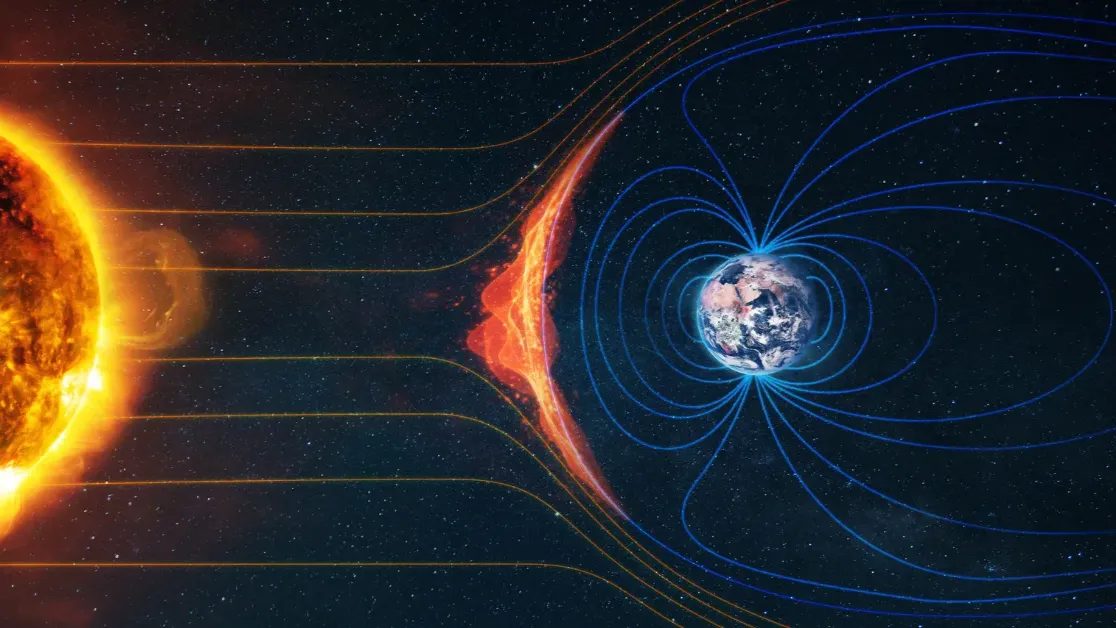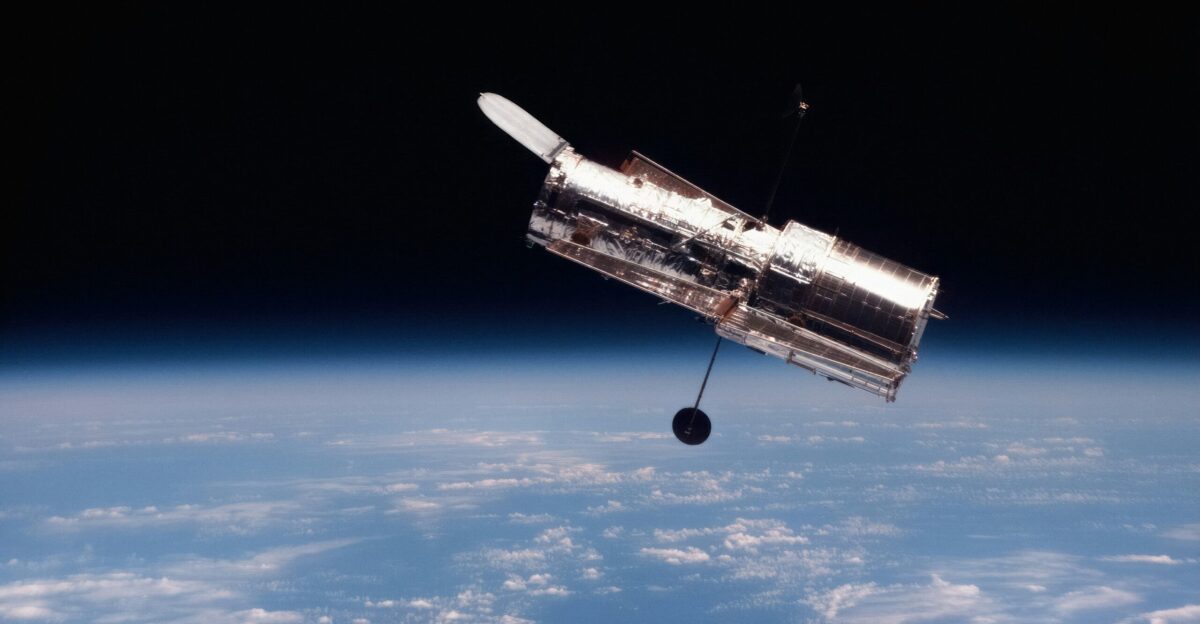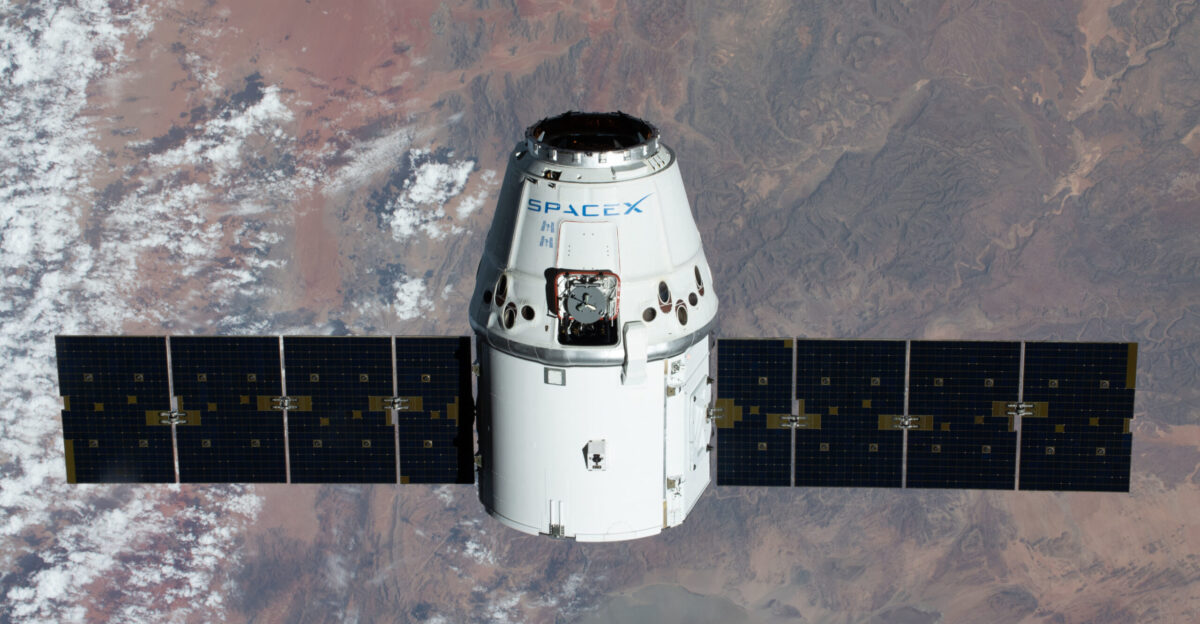
During the May 2024 Gannon superstorm, Earth’s plasmasphere experienced the most extreme contraction ever directly measured. Satellite observations showed its outer boundary plunging from roughly 44,000 kilometers to about 9,600 kilometers in under nine hours—an estimated shrinkage of nearly 78%.
This sudden collapse coincided with widespread GPS degradation, satellite anomalies, and radio interference affecting systems relied upon by billions of users worldwide, confirming that extreme space weather can rapidly disrupt modern technological infrastructure.
Why the Plasmasphere Matters

The plasmasphere is a vast torus of cold, dense plasma that co-rotates with Earth’s magnetic field and normally extends tens of thousands of kilometers into space. It plays a critical role in regulating radiation, wave–particle interactions, and the stability of radio and navigation signals passing through near-Earth space.
When the plasmasphere is intact, it provides a buffer for satellites. When it is depleted, radiation exposure rises and GPS and radio reliability measurably degrades.
The May 2024 Gannon Superstor

The Gannon storm erupted on May 10–11, 2024, after multiple powerful solar eruptions hurled magnetized plasma toward Earth. Space-weather agencies classified it as the strongest geomagnetic storm in more than two decades.
Auroras were observed far outside their usual polar regions, and magnetic indices reached extreme levels. The Japanese Arase satellite, repeatedly passing through the plasmasphere, captured unparalleled real-time data on how violently a superstorm can reshape Earth’s plasma environment.
What Actually Caused the Collapse

Scientists determined that the collapse was driven not only by solar wind pressure but also by a rare “negative ionospheric storm.” Intense heating near the poles altered upper-atmospheric chemistry, sharply reducing the supply of charged particles flowing upward to replenish the plasmasphere.
With this supply line cut off, the plasmasphere could not recover quickly after being compressed. This coupling between ionospheric starvation and plasmaspheric collapse had never been so clearly documented before.
A 78% Shrinkage in Hours

Arase data showed the plasmapause—the outer edge of the plasmasphere—falling from about 44,000 km to roughly 9,600 km in less than nine hours. This represented a reduction to about one-fifth of its normal size, making it the most dramatic collapse observed since systematic monitoring began in 2017.
Researchers describe this contraction as unprecedented in both speed and scale for the modern satellite era, establishing a new benchmark for extreme but realistic space-weather behavior.
Direct GPS and Communication Disruption

During the storm’s peak, GNSS accuracy degraded, with users experiencing increased positioning errors and intermittent signal loss. Radio communications across several bands also suffered fading and disruption. Satellite operators reported temporary anomalies and data outages.
Because GNSS underpins aviation, maritime navigation, smartphone location services, agriculture, finance, and emergency response, even short-term disturbances translated into widespread, though uneven, operational disruption across critical sectors worldwide.
Radiation Exposure and Satellite Risk

As the plasmasphere shrank, satellites that normally operate within relatively stable plasma conditions were suddenly exposed to intensified radiation and energetic particle waves. This environment increases risks of surface charging, deep-dielectric charging, and electronic upsets.
Several satellites experienced short-term malfunctions during Gannon. More damaging is cumulative radiation exposure, which silently degrades electronics and solar panels, shortening satellite lifespans and increasing the likelihood of premature failures long after the storm ends.
New Electron Belts Closer to Earth

The storm generated unusually intense belts of energetic electrons much closer to Earth than typically observed. These belts heighten radiation hazards in orbital regions previously considered relatively safe.
Such enhancements are closely linked to strong wave–particle interactions triggered by extreme geomagnetic activity. Scientists warn that repeated exposure to these conditions accelerates material aging and electronic degradation, posing a long-term reliability challenge for the rapidly expanding population of satellites in low- and medium-Earth orbits.
Auroras as a Diagnostic Warning

Auroras during Gannon extended to unusually low latitudes, including parts of Mexico, southern Europe, and Japan. For space-weather scientists, these displays signal profound compression of the magnetosphere and plasmasphere.
When auroras shift this far equatorward, it indicates that the same processes lighting the sky are also distorting ionospheric electron densities, increasing radiation levels, and disrupting radio and navigation signal propagation across vast geographic regions.
An Exceptionally Slow Recovery

Under typical geomagnetic disturbances, the plasmasphere recovers within one to two days as ionospheric outflow replenishes lost plasma. After Gannon, recovery required more than four days—the slowest observed since Arase began systematic measurements in 2017.
This prolonged depletion meant that satellites and navigation systems operated in an unusually disturbed environment far longer than standard forecasting models anticipated, exposing a significant underestimation of post-storm vulnerability windows.
A World Dependent on GNSS

Modern civilization is deeply dependent on satellite navigation and timing. Aviation routing, maritime shipping, power-grid synchronization, telecommunications, financial transaction timing, precision agriculture, and emergency services all rely on GNSS.
When solar storms disrupt the plasmasphere and ionosphere, these systems simultaneously experience performance degradation. Gannon demonstrated that even without dramatic infrastructure collapses, space weather can quietly generate widespread friction across the global economy.
Cascading Second-Order Effects

When GNSS reliability drops, aviation and maritime operators must shift to backup procedures that are slower and less efficient. Flights reroute or change altitudes, ships navigate more conservatively, and logistics chains lose precision.
During a storm of Gannon’s scale, these adjustments propagate across entire networks. While no single failure may appear catastrophic, the combined global impact emerges through delays, increased costs, elevated safety risk, and reduced system resilience.
A Fragile and Dynamic Shield Revealed

For decades, the plasmasphere was often treated as a relatively stable background feature of near-Earth space.
Gannon proved otherwise. A plasma structure spanning tens of thousands of kilometers was crushed to a fraction of its normal size in mere hours and remained depleted for days. The storm revealed that Earth’s space-environment shield is highly dynamic and tightly coupled to upper-atmospheric chemistry, with far greater relevance to technological reliability than previously assumed.
Solar Cycle Timing and Future Risk

The Gannon superstorm occurred as the Sun moves toward the peak of its 11-year solar activity cycle, when strong eruptions become more frequent. Historical statistics suggest that storms of comparable magnitude occur roughly once every two to three decades.
Scientists therefore view Gannon not as a once-in-a-lifetime anomaly, but as a realistic preview of conditions that modern infrastructure must be prepared to withstand again during future solar maxima.
A Shrinking Shield and a Clear Warning

The May 2024 Gannon superstorm compressed Earth’s plasmasphere by nearly 78% in hours, delayed its recovery for over four days, created rare low-latitude auroras, intensified radiation belts, and measurably disrupted GPS, satellite operations, and radio communications.
While it did not cause global blackouts, it exposed how vulnerable space-dependent systems have become. The event delivers a clear warning: Earth’s plasma shield is dynamic, fragile, and now inseparably linked to the stability of twenty-first-century civilization.